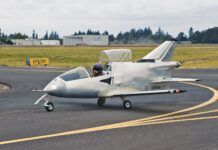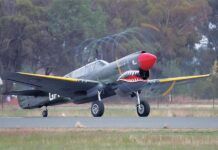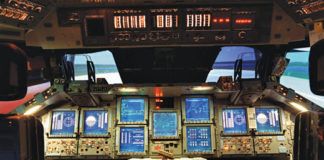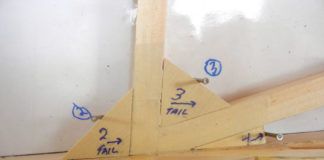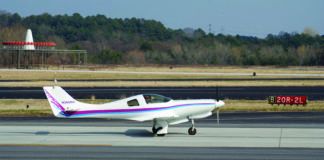When a young man named Charles Lindbergh decided it was time for a Paris vacation back in 1927, he started his planning by measuring the distance for his trip on a globe in the public library, then added a few hundred miles for reserves. He then gave that number to the designer and said that making that distance was all that mattered—there were no other hard design criteria for the airplane. Likewise, when Burt Rutan’s brother casually asked about a cross-country that would land and take off at the same place, but he only wanted to fly in one direction, a strange aircraft named Voyager emerged from the drawing board—good for flying a long way in one direction, but pretty much useless for anything else.

These (and many other) aircraft are examples of what aeronautical engineers refer to as “point designs.” They are the answers to a particular, well-defined problem. They don‘t necessarily answer any other problem, and by focusing on one particular idea, they often fall short in answering many other criteria that other aircraft might fulfill. Spacecraft are often point designs, the amount of energy required to lift a machine off of the planet being so large and the margins being so small. You don’t just randomly launch a rocket to the moon that was designed to go to the space station—it simply won’t work.
Likewise, that beautiful Cub derivative that is perfect for taking two people up into the air on a nice day is not the airplane to launch for a 2000-mile cross-country in all kinds of weather (unless you’re young and have the last name of Buck). But taking a high-performance speed machine with all the bells and whistles out for a leisurely sunset flight over the local pasture probably won’t work either.
I was thinking about this a while back when I was working to add differential brakes and a swiveling steerable tailwheel to the Xenos motorglider project we’ve had in our shop for a while. Sonex’s founder, John Monnett, built the airplane simple for a reason—simple requires less maintenance and is both cheaper and easier to construct. So he built it with a single hand lever that brakes both wheels at once, and the tailwheel is firmly linked to the rudder. This works great when you have a wide-open runway/taxiway system that allows large radius turns.
But my little slice of aviation heaven requires me to make a hard left, then a hard right on a fairly narrow taxiway to get to a wide runway. In order to use the airplane as it was built, I’d need to walk the airplane past those turns while lifting the tail, then get in and start it up. So doing a few sketches of turn radii, taxiway configurations, and the airplane dimensions, I determined that if I incorporated a swiveling tailwheel, I could make the route work without getting out of the airplane. Of course, in order to take advantage of the swivel, I’d need differential brakes, which meant adding brake pedals, two master cylinders, and the necessary plumbing to accommodate individual brake systems for each wheel. This was more complex, more costly, and slightly heavier. But it solved my particular problem—it was a point solution.
The problem with point solutions is that while you might expand an airplane’s envelope in one direction, you will almost always shrink it in another. It’s like standing inside a large bag or balloon and poking your arm in one direction—the envelope will always draw in elsewhere. There is only so much performance to be had. If you make an airplane faster, it will generally increase the stall speed. Give it longer range, you have a lower percentage of useful load that isn’t fuel. Making it lighter overall generally means that the structure will have lower strength margins…and so on. Getting a single airplane that does all things well is not easy, although there are designs out there that hit magical combinations where they do many things better than others.
But still, point designs have their place. Bopping around in the backcountry, it’s nice to have those big, draggy tires and large-stroke suspensions when you’re trying to land on a postage stamp carved out of the side of a cliff. But you don’t necessarily want to sit in that 65-mph wonder all the way from the west coast to Oshkosh. And that super fast machine that can carry two people and their toothbrush (they’ll have to share one unfortunately; the cabin sacrificed space for frontal area) isn’t going to be your first choice to take to the Chicken Strip in Death Valley.
The key, of course, is to figure out what you most want your airplane to do. Just like Lindbergh sketching that route from New York to Paris, you need to define your mission (or missions), then find (or design) an airplane that can do all of the jobs you want it to do. Or, of course, you can build a bigger hangar that fits more airplanes—sometimes those point designs are just so far out on the fringe that you need several in order to reach all of your goals. If that is not an option, don’t forget the old rule that you don’t get somethin’ for nothin’, and that compromise is the art of achieving as much as you can reasonably afford.









